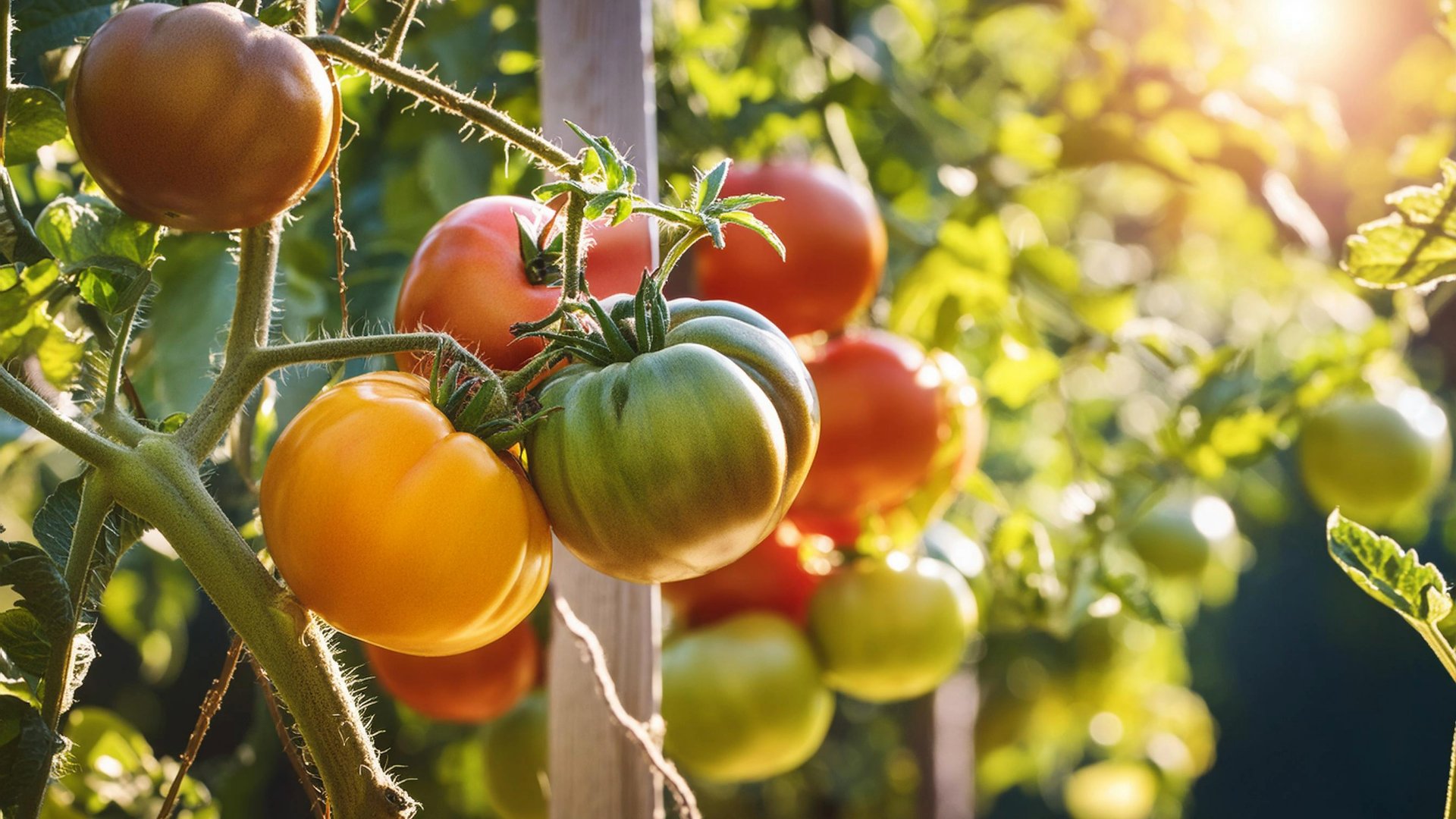
The CSA Mindset
Overcoming the Challenges of Seasonal Eating
Choosing to eat local is more than just the choice to get your fresh produce from a different supplier; for long-term CSA people, it’s a lifestyle choice. Why? Eating locally and seasonally is rarely convenient.
I am constantly frustrated by online recipes for “Spring Carbonara!” that call for cherry tomatoes (is late July considered spring? Maybe in Minnesota…) or “Summer Salads” that require tender arugula, a crop that tastes bitter and tough in the heat of August. The current global food system largely disregards seasonality, and consequently so does the modern cook, making the search for seasonal recipe inspiration disappointing at best. While there are workarounds in the form of home food preservation (and a local diet requires home food preservation!), the reality of eating with the seasons can take some getting used to.
If this is your first time receiving a CSA and you have not experienced a local diet before, you will encounter challenges. I encourage you to meet these challenges with curiosity and creativity, and remember the “why” that led you to becoming a CSA member. Rarely are the worthwhile pursuits of our lives easy!
In a perfect world, there would be a step by step plan for becoming a “CSA Person,” but every CSA Person is different, and there are many different ways you can succeed at (or at the very least, manage) eating with the seasons. People who are long-term CSA members experience challenges, too, but they have learned to adapt to the realities of seasonal eating. Here are my answers to the challenges posed above, should you face them, and remember: you can always just eat potato chips for dinner and try again tomorrow.
How do I eat all of these vegetables?
Eat vegetables for breakfast. If you have the time, make a large batch of some sort of breakfast (quiche or egg bake, burritos, baked oatmeal) and incorporate vegetables where you can. Add greens to your toast or bagel, make quick pickles to add as a condiment to a breakfast sandwich or scramble. Ditch traditional “American” breakfasts all together, and remember that you can eat whatever you want for whichever meal you please, like eggplant and salmon for breakfast.
Find a go-to “fridge clean out” recipe that you can make weekly and throw any remaining veggies in before you pick up your next box. This could be stir fry, soup, a pasta bake, frittata, or simply roasted veggies. As long as it’s versatile and can lend well to the changing flavors of the season (and you like it enough to eat weekly), it’s good to have a go-to catch all in your pocket for the times when the meal plan doesn’t quite work out.
You don’t have to eat all of these vegetables right now. The joy (and downfall) of seasonal eating is the annual boom and bust. You will be overwhelmed by fresh produce in September, and desperately longing for it in March. When you have the time or the extra veg, preserve your excess in September so you can enjoy it throughout the winter. Fridge pickles can last a very long time and are easy to make– find a recipe you like and experiment with pickling different vegetables. Throw excess greens in the freezer, no need to blanch (I never do, and they last for at least 6 months frozen) and add to soups, casseroles, or smoothies. Dehydrate anything in your oven (even whole meals!) or invest in a dehydrator to preserve dried tomatoes, herbs, onion or garlic powders– I had a friend who dehydrated spinach, ground it up, and added it to everything she fed her kids. Learn to preserve your bounty in ways that you’ll actually utilize, that seem manageable and doable. Canning is not your only option!
Throughout the season you’ll receive meal plans, recipe ideas, and preservation inspiration in our weekly farm newsletters to help you along the way. If you have a go-to recipe or favorite vegetable catch-all that you’d like to share, email it to csa@featherstonefarm.com and we’ll feature it in our newsletter.
How do I use this weird vegetable that I’ve never heard of?
Check your email! If there’s ever an “unusual” vegetable in your box, I will make sure to provide multiple recipes and meal ideas in our weekly newsletter that feature these fleeting friends! If we sell a vegetable that you might consider weird, it’s probably because that vegetable has qualities that do not align with the industrial food system, where visually appealing disease and pest resistant food is shipped great distances and stored for varying amounts of time before landing in your shopping cart. These “weird” vegetables still taste great and are filled with just as much potential as your standard broccoli or tomato. See also: How do I find recipes that use in-season ingredients? Be curious and creative, and when in doubt: pickle it.
I don’t want to spend all my free time cooking!
If you don’t enjoy cooking, a CSA may not be for you. But even if you enjoy making your own meals at home, having a CSA can still make you feel like you just can’t catch a break sometimes. I have personally accepted the fact that even the “simple” dinners I think will be quick and easy will take at least an hour of my time. The best way to manage your time and your meals involves Meal Planning. Include as much detail in your meal plan as possible. It is easier to have too much planned and not need to utilize it all, than fall short and have to come up with something on the fly. If you are inspired, you can always amend the plan. If you are tired, you can always shift some things around. There are lots of resources available for coming up with a meal plan, but I think it’s easiest to just sit down, look at what’s coming in your CSA box (by logging in to your member account!) for the week, and brainstorming as many ideas as possible, and attaching those ideas to a meal and day of the week. You can even give yourself multiple days off from cooking by meal prepping or batch cooking. Use the recipes we provide in our weekly newsletter for reference and inspiration, and work towards creating your own meal plan!
How do I find recipes that use in-season ingredients?
Check your email! We provide many recipe ideas in our weekly CSA newsletters that are seasonally appropriate for the vegetables you’re receiving in your box. If you don’t feel excited about any of the recipes we send out, try searching for “CSA Recipes” and browsing other farms’ recipe indexes. We are working on building a Featherstone recipe index on our website, but this is a big job and is unfortunately taking a while. Many farms have already done this work, so feel free to search through their recipes for more ideas. You can also search for CSA or Farmer’s Market inspired food bloggers. Looking up “bok choy recipe ideas” will work, too, but you will probably encounter more recipes that include out-of-season ingredients alongside the specific ingredient you’re hoping to use. Alternatively, you can invest in a good cookbook such as Bounty from the Box, a comprehensive cookbook designed specifically for CSA members. (This book had its genesis at Featherstone Farm, so you’ll see references to us in it!)
If you have a go-to recipe that you’d like to share, email it to csa@featherstonefarm.com and we’ll feature it in our newsletter.
I want to try new things but it feels exhausting.
Try adding different vegetables to the foods you already make and enjoy. You don’t have to always create something completely new, and experimenting with what you’re already familiar with will help you get to know these vegetables even better. You can, for example, roast an eggplant or zucchini, puree it, and add it to your favorite soup recipe (I can’t think of a single soup I wouldn’t add that to: tomato, chicken noodle, wild rice, even a canned condensed soup) for a little more depth and creaminess. Add roasted winter squash cubes to your favorite tacos. Pickle radishes or peppers to put atop your avocado toast or ham sandwich. You don’t need a new recipe for every vegetable you encounter, and you don’t need to completely change the way you eat. Make a list of the foods you already enjoy, and brainstorm ways to add a little veg (you can put beets in brownies).
I’ve never meal planned before.
See “I don’t want to spend all my free time cooking!” above. Meal planning helps you manage your time and your fridge. If you find yourself overwhelmed by your CSA vegetables, try meal planning. If you find yourself overwhelmed by meal planning, start with planning 2 or 3 meals for the week, without assigning them to a specific day. As it gets easier, add a few more meals, and maybe start planning out which day of the week you’ll be cooking one or two of them. Doing all the mental work of “what’s for dinner” at once will start to feel easier than asking that question everyday. For more resources and meal plan inspiration, check out these articles:
If you have any questions or need help with your CSA subscription, contact Nicole at csa@featherstonefarm.com or give me a call/text at 507-429-2003. I love to hear feedback and chat recipe ideas or kitchen troubleshooting!


